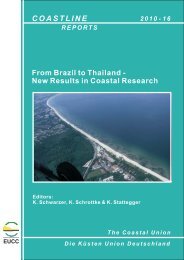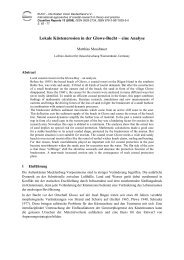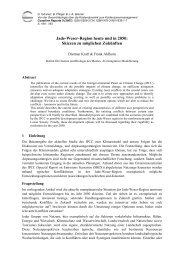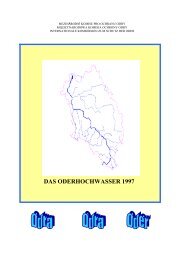An exercise in Stakeholder Analysis for a hypothetical offshore wind ...
An exercise in Stakeholder Analysis for a hypothetical offshore wind ...
An exercise in Stakeholder Analysis for a hypothetical offshore wind ...
You also want an ePaper? Increase the reach of your titles
YUMPU automatically turns print PDFs into web optimized ePapers that Google loves.
STAKEHOLDER ANALYSIS WHY?<br />
1. WHY A STAKEHOLDER ANALYSIS?<br />
The use of <strong>Stakeholder</strong> <strong>An</strong>alysis methodology is based on the follow<strong>in</strong>g<br />
premises:<br />
1.1. The need to identify stakeholders, classify them and prioritise them<br />
accord<strong>in</strong>gly. Stake hold<strong>in</strong>g has become the lynchp<strong>in</strong> of public <strong>in</strong>itiatives.<br />
We now not only see an obligation to establish stake hold<strong>in</strong>g processes,<br />
but also the emergence of a new stake hold<strong>in</strong>g philosophy which<br />
broadens the scope beyond the traditional stakeholders of users or<br />
affected parties. The identification of these new stakeholders has<br />
become a requirement <strong>for</strong> implement<strong>in</strong>g any political action.<br />
Nevertheless, one of the problems faced when putt<strong>in</strong>g more participative<br />
models <strong>in</strong>to practice is how to prioritise, or assign importance to the<br />
different stakeholders. In order <strong>for</strong> this prioritis<strong>in</strong>g to be done, first a<br />
hierarchy or classification that determ<strong>in</strong>es the various stakeholders’<br />
<strong>in</strong>terests or <strong>in</strong>fluence has to be established. In other words, identification<br />
on its own is not enough, and stakeholders need to be classified <strong>in</strong><br />
accordance with the extent to which they are affected by, or opposed to,<br />
or <strong>in</strong>terested <strong>in</strong> the envisaged public policy or re<strong>for</strong>m project.<br />
1.2. Methodological problems. There are no def<strong>in</strong>itive <strong>for</strong>mulae <strong>for</strong><br />
identify<strong>in</strong>g, classify<strong>in</strong>g and prioritis<strong>in</strong>g stakeholders. There is a range of<br />
scientific methodology but this must be adapted to the specific features<br />
of the field be<strong>in</strong>g studied. Despite these constra<strong>in</strong>ts, <strong>Stakeholder</strong><br />
<strong>An</strong>alysis is a useful tool <strong>for</strong> our purposes <strong>in</strong> the SPICOSA project, as it<br />
<strong>in</strong>cludes techniques <strong>for</strong> identification, classification and prioritisation. It is<br />
a basis on which to later construct stakeholder classification and<br />
prioritisation once the field work has been conducted. <strong>An</strong>y stakeholder<br />
identification and analysis process needs lengthy field work to be<br />
conducted <strong>in</strong> the geographical area under study; if we only restrict<br />
ourselves to an analysis of organisations, <strong>in</strong>stitutions and <strong>for</strong>mal<br />
associations, we run the risk of not tak<strong>in</strong>g <strong>in</strong>to consideration the<br />
existence of real sectors of population who, while not be<strong>in</strong>g represented<br />
by any agreed spokespeople, nonetheless also have some <strong>in</strong>terest<br />
(Escalera, J, 2007).<br />
1.3. Beyond the <strong>in</strong>ventory. As has been po<strong>in</strong>ted out, a simple list<strong>in</strong>g of<br />
stakeholders is not enough. This <strong>in</strong>ventory has to be surpassed by the<br />
use of a specific classification structured <strong>in</strong> such a way that it allows the<br />
degree of <strong>in</strong>volvement of stakeholders <strong>in</strong> the envisaged policy to be<br />
evaluated. <strong>Stakeholder</strong> <strong>An</strong>alysis is a systematic methodology that is<br />
suitable <strong>for</strong> the task <strong>in</strong> hand, i.e.: gaug<strong>in</strong>g the specific importance of each<br />
actor or group concerned by identify<strong>in</strong>g their attributes and<br />
<strong>in</strong>terrelationships.<br />
6








